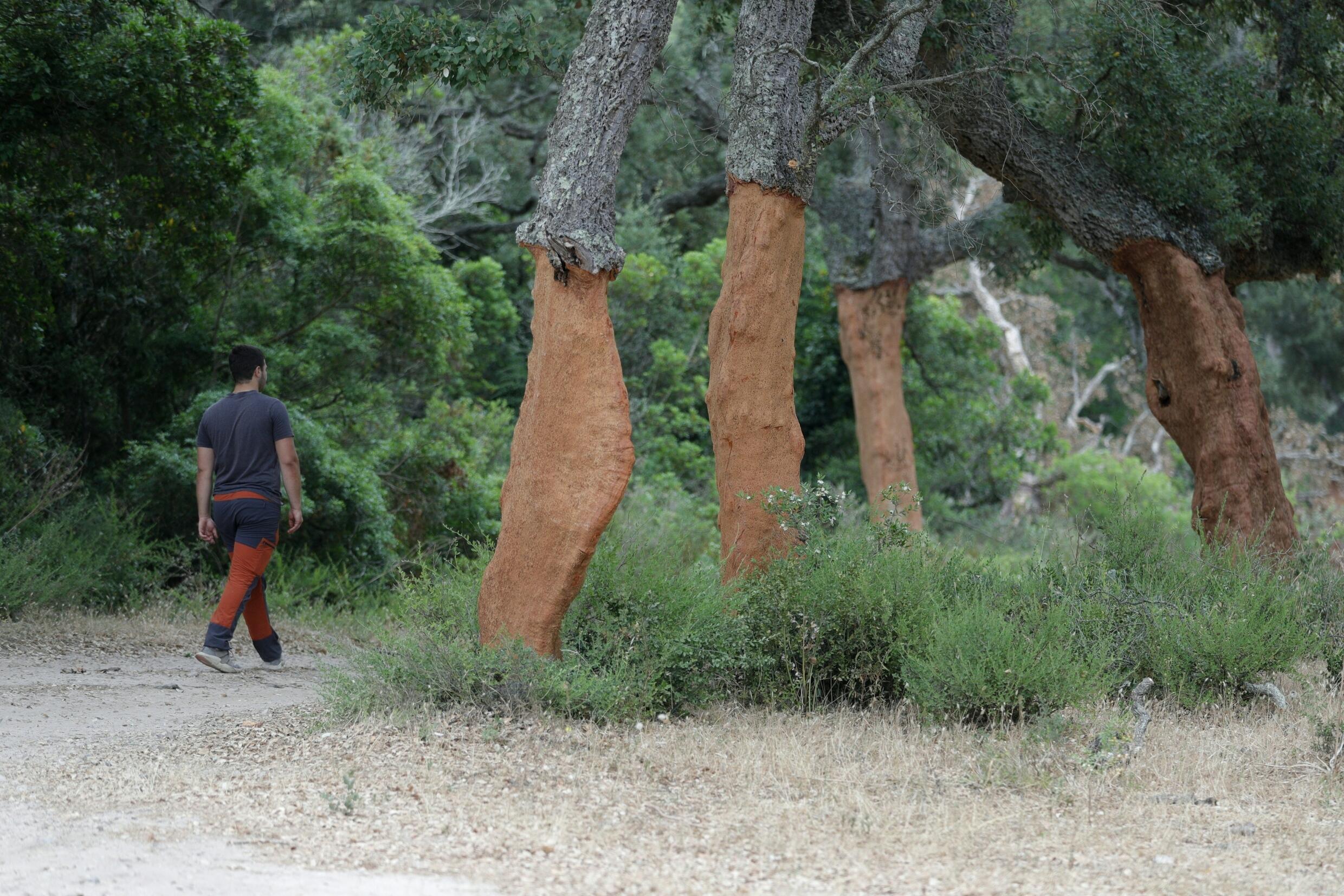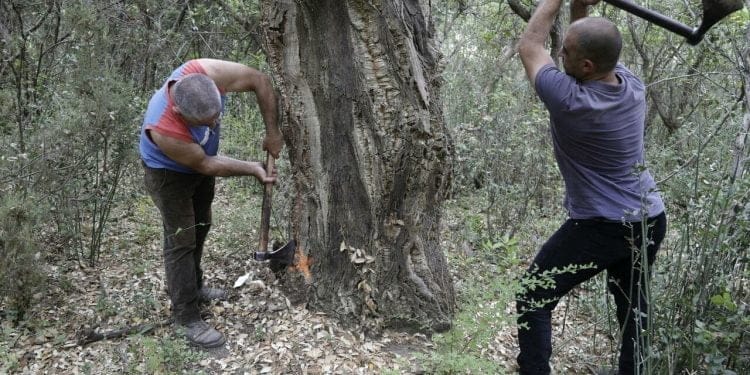[ad_1]
Printed on :
Sotta (France) (AFP) – Close to the village of Sotta in Corsica, two Sardinian employees “raise” with an ax, within the conventional means, the cork of the oaks; in Sartène, the harvest is completed with an progressive chainsaw. In essentially the most wooded island of the Mediterranean, the cork sector is reborn.
Identified above all for its use in wine or champagne corks, “cork has many good years forward of it with international warming”, explains to AFP François Muracciole, director of the Corsican cooperative Silvacoop.
“Already, we do not reduce the timber so the CO2 reservoir is fixed and this biosourced product has many qualities: it’s rot-proof, insulating and has a really robust resistance to fires”, cork oaks surviving forest fires a as soon as the charred cork is eliminated.
Since 2016, the cooperative has been engaged in long-term work to revive a sector which skilled its affluent interval in Corsica within the 1960s earlier than virtually disappearing.
In a forest close to Sotta, two cork cutters from the Italian island of Sardinia, very near Corsica are exhausting at work: With dexterity, Gigi Gessa, 40 years of ax slicing expertise and Alessandro Zucca, 20 years on the clock, in a couple of minutes strip the tree of its bark about two meters excessive. Pietro Marrocu, a 3rd Sardinian, collects and prepares this cork for transport.
“That is the entire issue, you must hit exhausting to separate the cork however not an excessive amount of in order to not harm + the mom +”, the title of the naked trunk. The sensor, they’ve it within the biceps”, marvels François Muracciole who recruited these skilled Sardinian employees able to taking “about 700 kg” of cork per day.

The primary “lifting” is completed on an oak of about twenty years and permits to take away low high quality “male cork”, used primarily in insulation, explains the director of the cooperative which brings collectively 140 house owners and almost four,00zero hectares of forest.
Then will come, after 9 to 12 years of reconstitution of the dear bio-material, a second lifting of “feminine cork” of higher high quality and so forth, each ten years.
“There is no such thing as a staff of conventional lifters in Corsica, that is the large downside” understanding that it takes “5 to 6 years to coach them”, factors out Mr. Muracciole.
Better harvest potential
“I’m from the area the place cork has all the time been lifted. I dream of studying this commerce” to rehabilitate household plots of cork oaks, confides to AFP Joseph Matteï, scholar in BTS forest administration of 18 years. , presently in coaching.

To extend productiveness and above all discover an island workforce, in 2021 the cooperative educated round ten Corsican forestry entrepreneurs in a brand new machine which this yr enabled the primary mechanized lifting in Sartène (Corse-du-Sud), sooner and fewer exhausting than with an axe.
This mini-chainsaw, outfitted with a probe that controls the depth of reduce in order to not injure the tree, is a hope for the sector.
Corsica has 60,00zero hectares of cork oaks, “the best harvest potential in all of France”, underlines Silvacoop, which has already multiplied its cork manufacturing by eight in six years, between 2016 and 2022.
Nevertheless, greater than 70% of the mobilizable standing useful resource is low high quality “male cork” and fewer than 10% is of “corkable cork” high quality.
François Muracciole judges “illusory to wish to redo the cork in Corsica” whereas Portugal, the world’s main cork producer, and particularly the Amorim firm, covers 70% of the world cork market.
This yr, the Corsican cooperative is working with three varieties of cork: the “male” reworked “in Sardinia into cork granules or reconstituted panels for insulation”.
Of the 2 qualities of feminine cork, 80% will go to Spain for the manufacture of reconstituted stoppers primarily based on crushed cork. The remaining 20%, of intermediate high quality, will go to Sardinia to make medium high quality corks.
“The target is to gather 300 to 400 tonnes per yr within the years to return”, towards 110 tonnes right this moment and “to arrange a primary transformation in Corsica, to work on cork-based insulation” , initiatives Mr. Muracciole.
© 2022 AFP
[ad_2]
Source link







